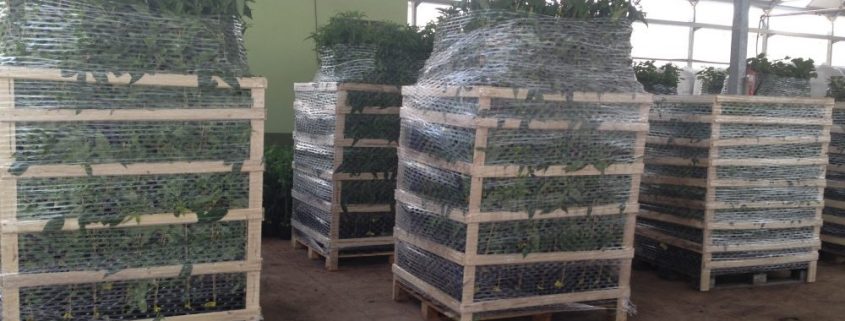“Today we export fruit plants to the main international markets”
For Viveros Hernandorena, the plant export line has become a basic pillar for the company. Present in 17 international markets, including some non-EU ones, professionalism, quality and strict compliance with international regulations on the export of plants guarantee their work as fruit exporters, a simple task, but full of gratifications, such as Rosa Hernandorena, commercial director explains to us in this interview.
By Marga López, agri-food journalist
Viveros Hernandorena has experienced significant growth in recent years, with an outstanding export line of fruit plants. Since when are you developing this commercial strategy?
In 2007, with the construction of the new facilities in Benimodo (Valencia), we expanded our production capacity, and with the incorporation of the latest technology, we were able to develop that export line with greater strength and guarantees. The national crisis, the update of our corporate image and the creation of the slogan in English “Planting for the future”, among other things, gave us the necessary push so that as of 2008/2009 we decided to bet on the export of fruit trees. As for the most exported species, although it is true that we started with the kaki, the pomegranate has been added to it in recent years, with which we are present in 17 international markets, mainly in the European Union, but also in countries extra-community, where large projects are being developed, such as North Africa and South America, to name a few, and although exporting to these destinations is not easy, they do have great growth potential.
What does the export represent for the company’s turnover?
Our short-term objective was that 40% of our turnover came from exportation, and fortunately we have already exceeded it, and it has been key, in addition to our specialization and effort, to attend international fairs such as Fruit Attraction, which we It has allowed us to expand our external visibility. Now the challenge is to place ourselves in 50% of the turnover of Viveros Hernandorena, and keep us in those figures. We cannot forget the national market, because although it is true that there are crises and there are not many large projects of new fruit farms, it is our natural market, Spain is the largest producer of fruit in Europe, and we have to continue taking care of our farmers and Offer them the best plants.
From the point of development in nursery, is a plant whose destination is the national market the same as for export?
From the moment the plant is produced, until its nursery development ends and we mark it as a commercial plant, the production and traceability that each one carries is the same, regardless of the final destination market, always following the regulations of the Regulation European Technician of Production of Plant of Nursery. Where the differentiation for the export plant begins is once its agronomic development is finished. A few months before shipment, we begin the analysis and certificates and prepare all the documentation that marks the legislation for export, also adapting to the regulations in force at the destination. These are operations with a higher risk, with a lot of documentary and analysis load, that need a perfect knowledge of the regulations of each country, not so much for EU markets, but for non-EU ones, where many analytics are necessary and quality controls before plant shipment. Each third country is different.
And once the plant and all the documentation are ready, the transit days begin, perhaps the most critical moment in the plant expedition….
Yes and no. If the plant is well selected and packaged from the nursery, well prepared, complying with all regulations, controls and protocols, there should be no problems at that stage of the export. In some cases our plant has withstood up to six weeks of transit, and has reached its destination in perfect condition. For this it is necessary that the logistics be carried out in containers where the temperature, humidity and ventilation is controlled. In this sense we have to put in value that Viveros Hernandorena is an authorized Border Inspection Point (PIF), that is, we are certified by the Ministry of Agriculture for inspectors, instead of inspecting our plants at customs before leaving to Destination, come to our facilities and carry out these checks here. This allows us greater control of the process and above all expedite and reduce transit days.
And the presentation format of the plant, is it the same in all countries?
Traditionally the demand is higher towards bare root plants, but it is also true that in recent years there are growing requests for potted plants with coconut fiber as a culture medium. This forces us to add a phytosanitary certificate, which guarantees that the plant has been cultivated under sterile conditions. But regardless of the format chosen, the fruit trees are sent in a state of latency, so the quality of it is not altered during logistics.









